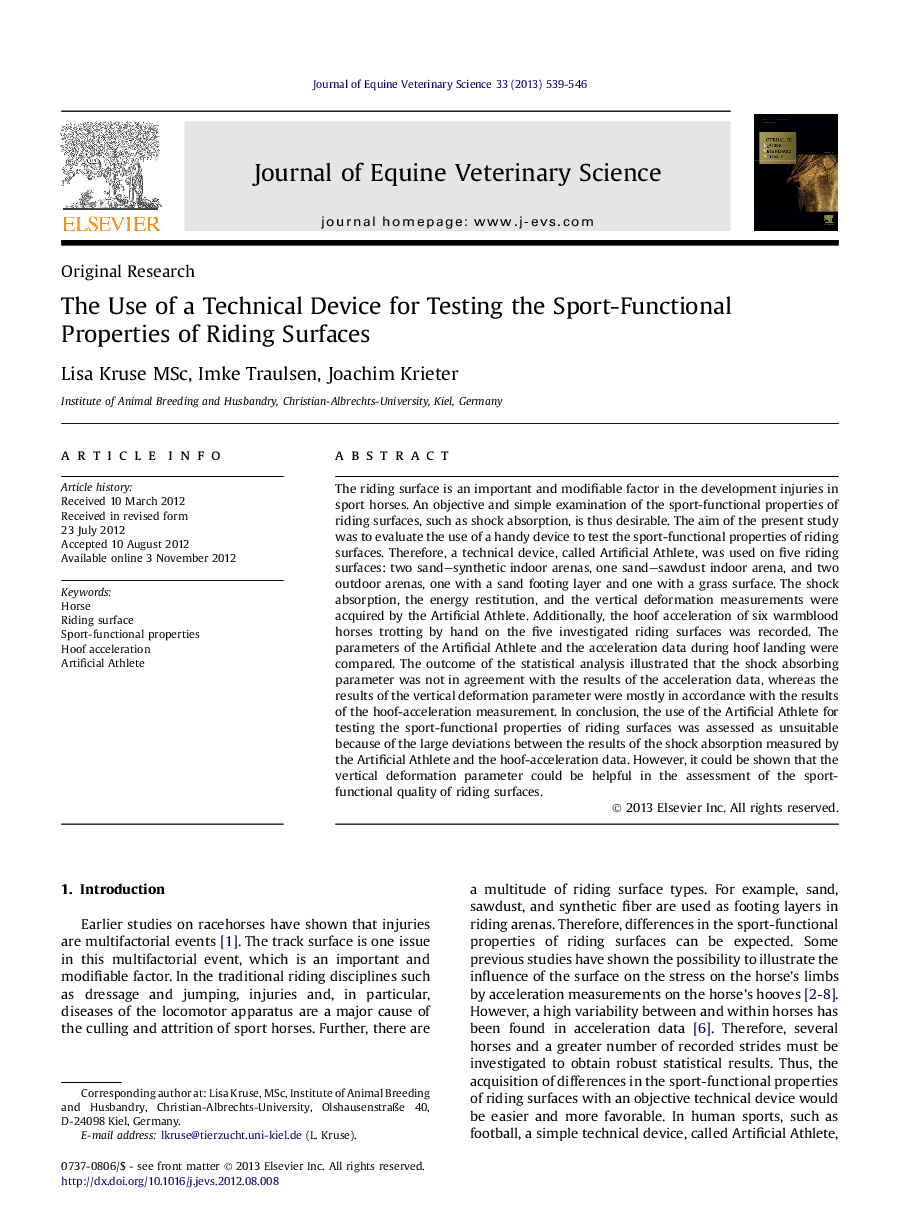| Article ID | Journal | Published Year | Pages | File Type |
|---|---|---|---|---|
| 10961312 | Journal of Equine Veterinary Science | 2013 | 8 Pages |
Abstract
The riding surface is an important and modifiable factor in the development injuries in sport horses. An objective and simple examination of the sport-functional properties of riding surfaces, such as shock absorption, is thus desirable. The aim of the present study was to evaluate the use of a handy device to test the sport-functional properties of riding surfaces. Therefore, a technical device, called Artificial Athlete, was used on five riding surfaces: two sand-synthetic indoor arenas, one sand-sawdust indoor arena, and two outdoor arenas, one with a sand footing layer and one with a grass surface. The shock absorption, the energy restitution, and the vertical deformation measurements were acquired by the Artificial Athlete. Additionally, the hoof acceleration of six warmblood horses trotting by hand on the five investigated riding surfaces was recorded. The parameters of the Artificial Athlete and the acceleration data during hoof landing were compared. The outcome of the statistical analysis illustrated that the shock absorbing parameter was not in agreement with the results of the acceleration data, whereas the results of the vertical deformation parameter were mostly in accordance with the results of the hoof-acceleration measurement. In conclusion, the use of the Artificial Athlete for testing the sport-functional properties of riding surfaces was assessed as unsuitable because of the large deviations between the results of the shock absorption measured by the Artificial Athlete and the hoof-acceleration data. However, it could be shown that the vertical deformation parameter could be helpful in the assessment of the sport-functional quality of riding surfaces.
Keywords
Related Topics
Life Sciences
Agricultural and Biological Sciences
Animal Science and Zoology
Authors
Lisa MSc, Imke Traulsen, Joachim Krieter,
